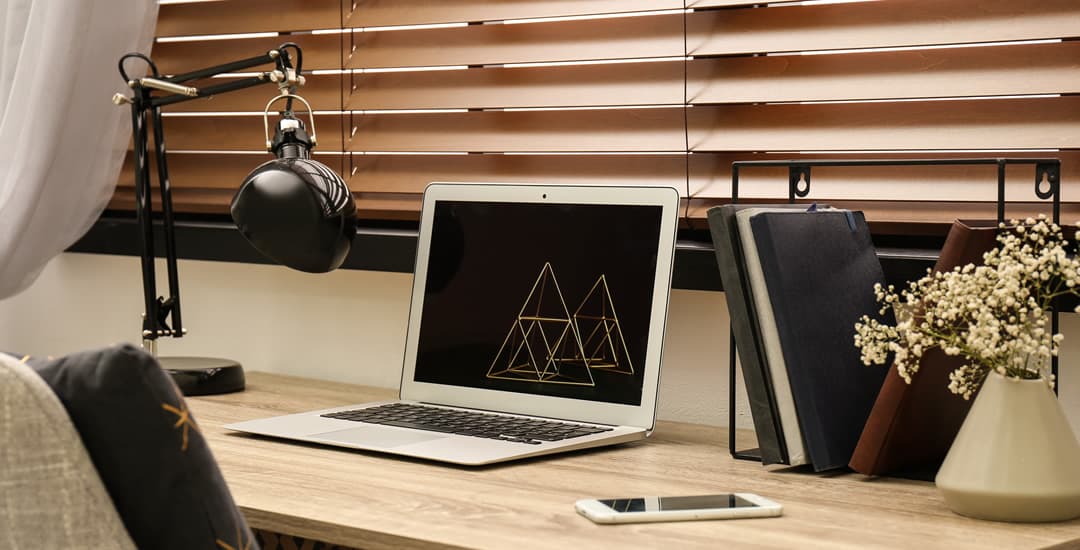
“What blinds are best for a home office” is a question that 99% of us never dreamed of having to ask ourselves this time last year. A year ago, if you’d have asked many office-based workers if they’d fancy working from home, they’d have been out the door carrying a box containing their pot plant and pictures of their pets faster than you could shout “on a strictly trial basis!” after them.
Since then, however, a lot of us have learned that that whole “wow you can work whenever it suits you and take loads of breaks and it’s like, really chill and convenient” thing was not, in reality, quite as advertised.
This latter means that the fact many businesses are considering continuing to have people work from home long after the pandemic is relegated to “that story we tell our children to um, explain why half of them were conceived in the first place” territory is not delighting everyone.
If you are one of the many who may be looking at working from your home office for the foreseeable future, you might well be thinking that now is the time to pick some new home office window blinds.
I’m using the term “home office” very broadly here by the way, to refer to whatever space you work from; be that an actual office, a desk in a spare room, or the kitchen table; I know that not everyone had a selection of spare rooms to choose between when work suddenly decided that they needed to commandeer one of them.
So, what are the best blinds for home offices? This sort of depends on the room you’re working out of. The office blinds you pick need to be properly suited to the task and the unique challenges of the room you’re choosing them for, so I suggest you check out this blog post on the factors to consider when picking the best blinds for offices too, before continuing on here with my suggestions on specific types to consider.
Already done that or just don’t like to be told how to live your life? All good. Read on then, to find out what types of modern office blinds to consider for your homeworking space.
Vertical office blinds
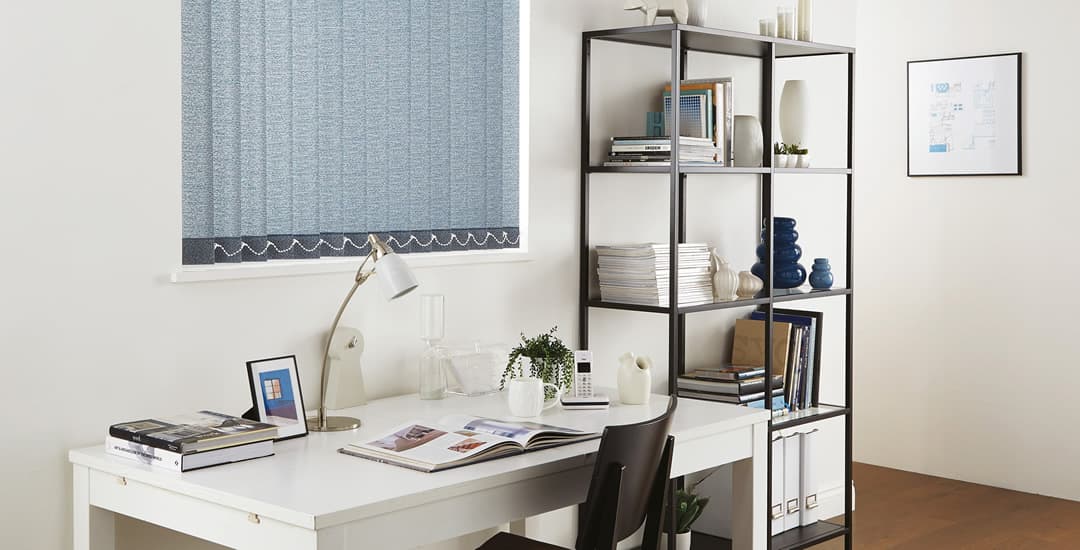
Vertical blinds are what most of us call to mind when we think of blinds in office settings; sadly, often in dingy off-white shades harkening back to the days when one could still smoke in workplaces, which tells you just how long ago some such blinds were installed.
On the one hand, don’t let this put you off them; vertical office blinds are a good pick for home offices for many of the same reasons they are for regular offices, and as you may have realised, blinds that were already old when the smoking ban came in but that are still functioning today know a thing or two about standing the test of time.
So, why vertical office blinds? One of the main advantages is the high degree of control they give you over the light. You can open or close them fully or tilt their louvres to the exact angle that suits you to filter the light and avoid screen glare.
Vertical office blinds are also well suited to larger windows, including French windows and patio doors (handy if your home office is also known as “the dining room table”), and they can be made in blackout fabrics, as well as coming in a wide range of colour choices.
Venetian office blinds
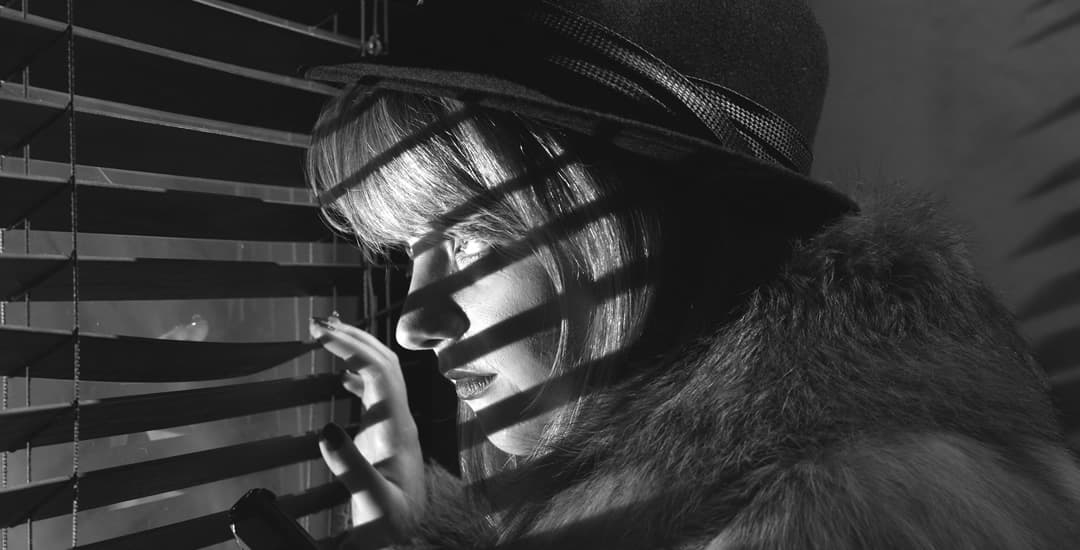
When we talk about Venetian blinds we’re generally referring to aluminium Venetian blinds specifically, and these are excellent at providing a high degree of light control by means of their tilting slats, which makes them good blinds for office windows. Price-wise, they’re not going to break the bank, they’re very hardwearing, and can just be wiped clean when they get dusty.
Venetian blinds are great to help you to avoid screen glare, or alternatively, can be used to make you look like a film noir bit player for your next Zoom call, if you prefer.
Wood and faux wood blinds
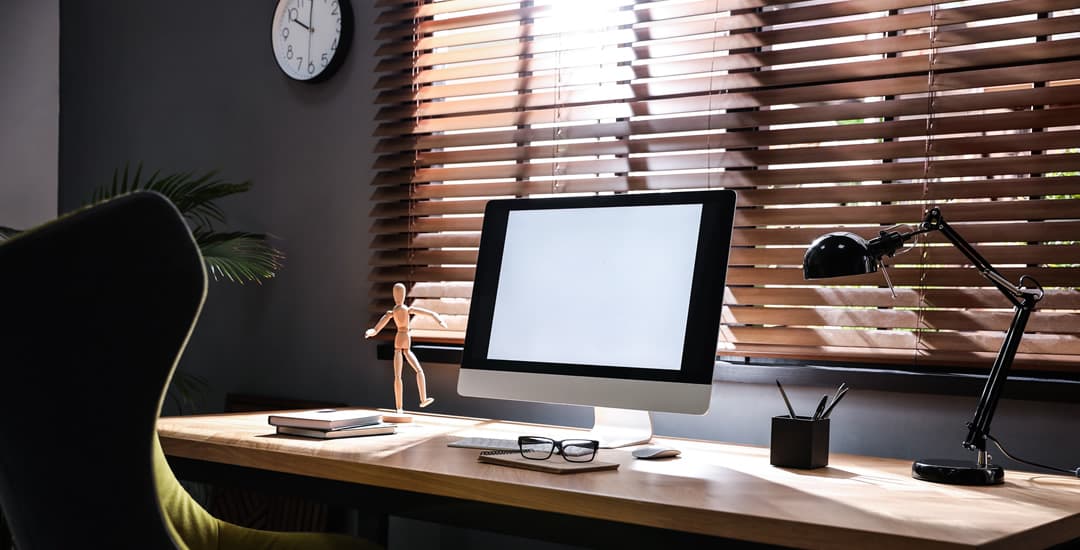
If you want your home office window coverings to blend into the style of a more casual room or a room that does double-duty as a home office and a space you chill out in, both wood and faux-wood blinds are a good option.
Sustainably sourced real wood blinds and faux-wood window blinds offer the same high level of light filtering control as the above-mentioned aluminium Venetian office best blinds. Price-wise, faux wood blinds are less costly and are virtually indistinguishable from the real thing; but if choosing natural materials for your home office blinds is important to you, well, when you know, you know.
Roller blinds
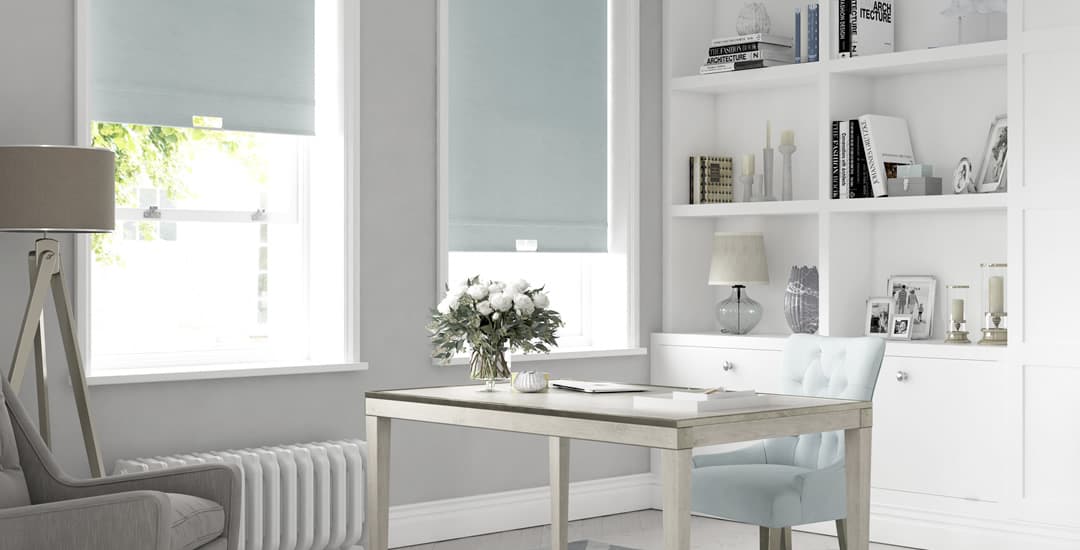
Roller blinds for a home office are a bit Marmite; on the one hand you can’t filter and angle the light with a fine degree of precision in the same way you can with the other options I’ve covered so far, but they can be rolled partially up or down.
One of the big points in the plus column for rollers when it comes to home office use is that you can get them in blackout fabrics (which might be a point in their favour if you do a lot of Zoom and need to block sunlight or glare for your calls) and also in what we call “dim-out fabrics.”
Dim-out fabrics for home office blinds are pukka if your room is glaringly bright to the point that you secretly wish you shared the dingy broom cupboard office that Angie from Accounts keeps making a point of telling everyone about, because dim-out roller blinds filter or take the edge off bright sun without blocking it entirely. This allows you to keep your room fairly bright, while also allowing you to keep your retinas attached.
Roller blinds can be made with a thermally insulating lining to cut down on drafts and reduce heat loss from your window, reducing your heating bills too.
Roman blinds
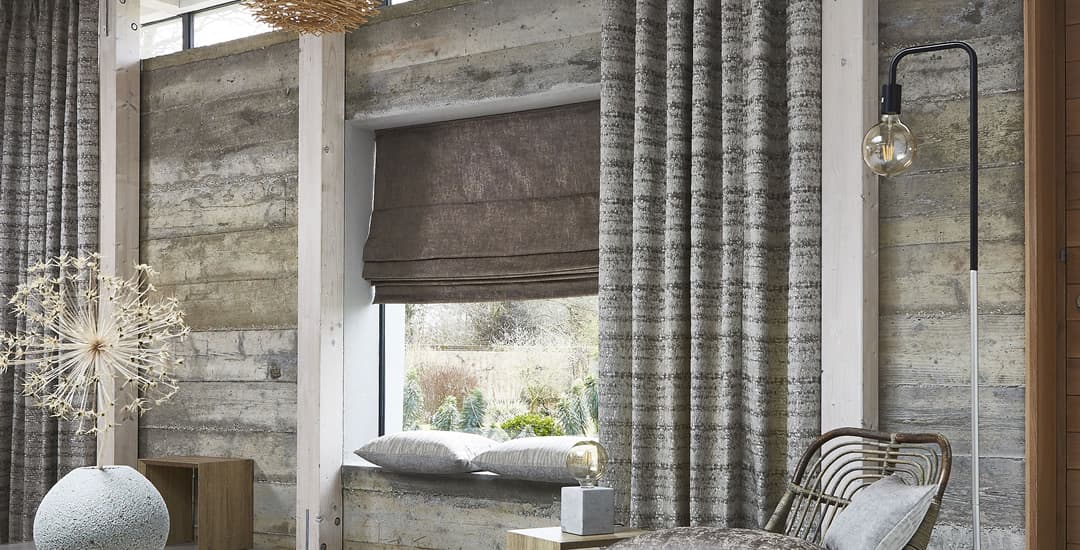
Finally, are Roman blinds for home offices actually a thing? There is no definitive reason why Roman blinds for a home office are inappropriate. They do have the same limitation as roller blinds in terms of no fine control over filtering the light, and while they can be made in blackout fabrics, there isn’t really a specific dim-out option as such, although a standard lining will allow a certain amount of light through.
On the plus side, they’re highly insulating, which can also work in your favour in reverse in summer if you keep them closed to help to reduce the effect direct sun has on home offices that turn into pressure cookers when warm.
The main appeal of Roman blinds for any room is that they’re frankly, very fancy; even the most subtle and muted of choices kind of scream “look at me, I’m a quality blind I am, full pedigree paperwork and impeccable tailoring” as soon as you look at them.
I suppose this then is perhaps why you don’t tend to see Roman blinds used as window treatments for offices at a commercial level, apart from maybe in the offices of interior designers. For office window blinds, price is usually a big factor in what is chosen and Roman blinds are kind of the high-maintenance trophy wife of blinds in terms of purchase cost.
If you do have Roman blinds in your home office, I want to hear from you and pics or it didn’t happen; and I’m going to assume that you’re a Kardashian or maybe a Level 84-or-above Insta-influencer in the meantime.
Need a home office blind, hun?
In closing (and in a complete surprise to absolutely no one), we here at English Blinds have quite the extensive range of home office blinds for sale, ranging from Very Economical right up to Peak Roman, should you so prefer.
All of our blinds are made to measure, and measuring for a window blind is not the dark art you may fear. If you’re shopping around to compare prices for home office blinds, you might even find that our bespoke-made blinds work out less costly than many off-the-peg alternatives that, well, maybe don’t have the same quality that we have either.
They paid me to say that, but it’s still true…




